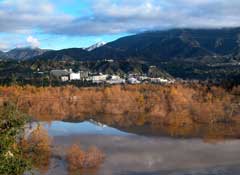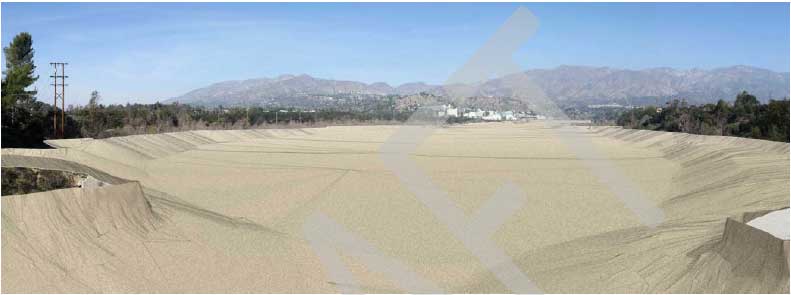

Devil's Gate Sediment Removal and Management Project
Fact Sheet
The Site | Devil's Gate Dam reservoir in Hahamongna Watershed Park. This is the flood basin in the Arroyo Seco at the foot of the San Gabriel Mountains where silt and sediment has been captured by the dam over the decades since the dam was constructed in 1920. The buildup of sediment was aggravated by several decades of neglected maintenance by the County Flood Control District and by a massive slug of sediment that flowed into the basin following the devastating Station Fire in 2009. Now the County wants to undertake a massive sediment removal program that will take as much as four million cubic yards of material from the dam and strip the rich riparian and wetland vegetation from the Hahamongna basin in a program that could cost as much as $100 million. In what the County ironically calls a sediment management program, the county plants to strip all the vegetation from the reservoir maintenance area each year permanently. |
|---|---|
The Removal Program | The County will remove 7,650 cubic yards per day over a three to five year period; 425 truck trips in and out per day; double trucks, each of which holds 20 cubic yards. Massive earth-moving equipment fill the trucks, which will descend into the basin just north of the dam and line up to allow one truck to be filled every two minutes. |
Operations |
Monday - Friday: 7 am - 7 pm; Saturday: 8-5 pm |
Seven Alternatives Considered |
|
Project Schedule | Between Summer 2015-2020 |
Mitigation for Biological Impacts | No mitigation program is specified by the Draft EIR, although a laundry list of promised steps is listed including:
|
The Future of Hahamongna

Today

Tomorrow?
Public Hearings
Wednesday, November 6, 2013
6:00 p.m. - 8:00 p.m.
Rose Bowl Stadium
Visitor's Locker Room
1001 Rose Bowl Drive
Pasadena, CA 91103
(Park in Lot F, enter at Gate A)
Thursday, November 14, 2013
6:30 p.m. - 8:30 p.m.
Jackson Elementary School Auditorium
593 West Woodbury Road
Altadena, CA 91001
(Park in lot in rear or on North Spaulding Place))
Saturday, November 16, 2013
2:00 p.m. - 4:00 p.m.
Community Center
La Caņada Flintridge
4469 Chevy Chase Drive
La Caņada Flintridge, CA 91011
(Park in Community Center/Pre-School Lot)